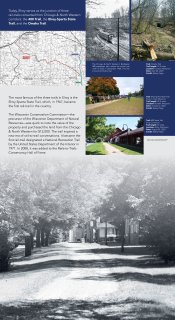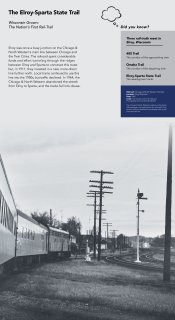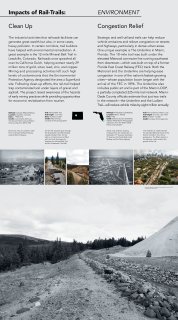
Railroads shaped US history and built the nation’s core
-
-
Did you know?
Railroads used to be the largest form of transportation in the United States.
Since their beginnings in the 1820s, railroad companies built more than 250,000 miles of track across the United States. These lines bridged communities, fostered westward expansion, and moved freight and passengers efficiently across the country. The American rail empire reached its zenith in the early twentieth century but began to falter shortly after.
New competition emerged in automobiles and airplanes. Shifting public policy also began to favor highways and airports over railroads. Federal regulations that had curbed greedy and monopolistic railroads at their height now began to cripple them. Deregulation in 1980 finally marked the beginning of a renaissance for the freight rail industry. To remain profitable, however, the industry needed to drastically downsize its network.
---
---
If railroads are strong today, why do we have so many rail-trails?
Railroads take two primary forms: main lines and branch lines. The abandonment of both types of lines has led to rail-trails.
Main lines connect major cities across great distances. As the rail industry consolidated throughout the latter half of the twentieth century, many parallel main lines became redundant. These main line abandonments have enabled some of the longest rail-tails.
Shorter branch lines “branch off” from main lines to serve smaller towns and rural industries, and industrial areas within cities. The closure of a factory or mine, or a shift in local traffic from train to truck, can doom a branch line. Their abandonments have led to hundreds of shorter rail-trails in both rural and urban areas.
-
-
Railroad construction and minority workers’ exploitation
Railroad construction was difficult and often dangerous. Laborers came from remote and less affluent regions of the United States and from across the globe. Ambitious and sometimes desperate immigrants seeking better lives came from as far as Europe, Mexico, and Asia. Exploitation, disease, injury, and death were common. Nevertheless, many workers persevered to gain a toehold in the United States and to send money home to their families. Today, the gentle grades that make rail-trails pleasant to ride are due to the legacy of these workers’ risks, hardships, and sacrifices.
-
-
Caption: Steam Shovel at work on the Delaware & Hudson Railway near Schenevus, New York, December 27, 1917. Unknown photographer, Jim Shaughnessy Collection, Center for Railroad Photography & Art, Shaughnessy-G-DH-045




